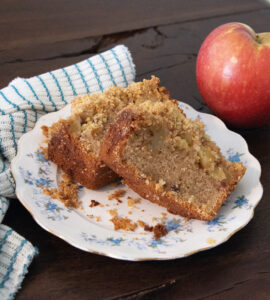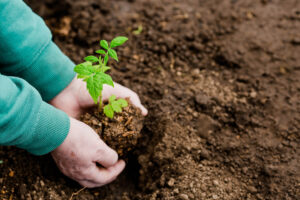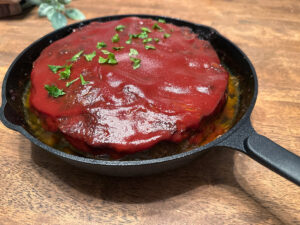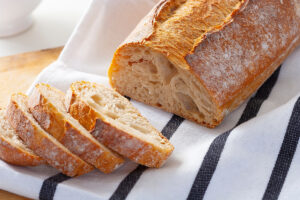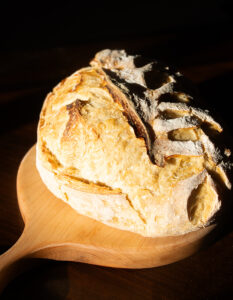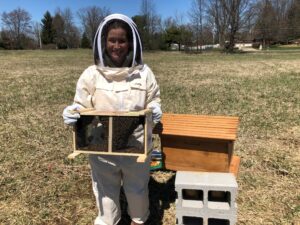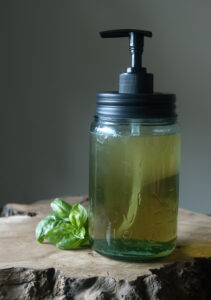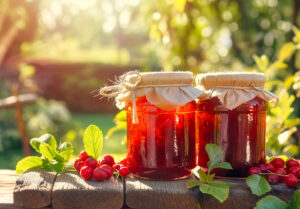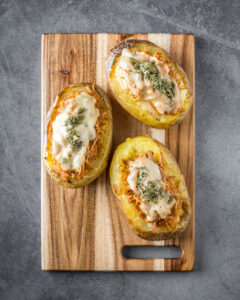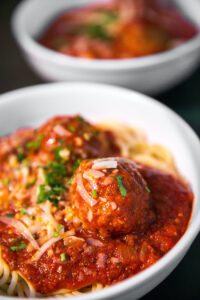
As a vegetable farmer, all season long I’m confronted with too much abundance — it’s absolutely overwhelming. In winter, though, it can feel like the opposite if I don’t prepare. So the question for me is, how can I manage the abundance of summer so that I can enjoy it into the winter?
I have four techniques for doing this: canning, freezing, fermenting, and fresh storage. All have their pros and cons. But let me tell you some of my favorite things to make, and then eat during winter.

Freezing
Whenever I come up with extra peas, beans, and broccoli, I do my best to blanch and freeze them. I don’t grow my own sweet corn, so I often don’t spend the time dealing with someone else’s abundance. I try not to freeze too much, though. Freezer space is precious, and I’d rather have half a hog available to me than as much broccoli.
The one vegetable I devote really significant amounts of freezer space to is sweet peppers… I love making winter stir-fries with that sweetness, and no tomato-based dish is complete in my mind without plenty of peppers also. I just halve the peppers, take the seeds out and stem off, and toss them in a freezer container — no blanching necessary.
And finally, if I made a zucchini bread a little more often, it might be worth it to shred zucchini in 2-cup quantities and freeze it, but honestly I don’t think much about zucchini bread except when confronted with big ones during the season, and the frozen stuff usually gets forgotten. (The tip here is: only freeze what you know you’ll like to use!)

Canning
This method loses some nutrients as compared to freezing, but it doesn’t take up freezer space, and it’s so satisfying to have a larder full of bright cans. I only water-bath can, which means I can only preserve acidic things without risk of botulism. In terms of vegetables, this pretty much means I can tomato products and vinegar pickles. I love making tomato and tomatillo salsa to can, and I make enough of it to eat until next tomato season, usually with corn chips as my lunch, or with eggs as my breakfast.
I also stew tomatoes and can those. All I do is choose tomatoes that aren’t too watery, cut them in half and squeeze the seeds out (I learned that technique when working at seed savers exchange), and then throw them in a big pot and cook down, skins and all. After a number of hours, I end up with something very like tomato paste. If I wanted to, I could run it through a food mill to make it smooth without the skins, but I’ve found that whatever I want to do with my stewed tomatoes—pizza sauce, pasta sauce, chili—doesn’t really mind having the skins in. I can it by packing it hot into jars, putting a tablespoon of lemon juice in to assure its acidity, and processing the jars for about 20 minutes.
I’ve learned to love making pickles, not only from cucumbers, but also from summer squash, beans, and okra. That sharp vinegar flavor coupled with dill or garlic or cayenne or all of the above is a really nice addition to any meal in the winter. But I don’t can too many batches of vinegar pickles, because my next method of preserving these things is even better.

Fermentation!
Clearly my favorite method, as the exclamation point proves. Fermentation of cabbage into kraut, or of cucumbers into pickles, or of hot peppers into hot sauce, is one of the most magical and enlivening ways of transforming food. Nutrients in the vegetables are preserved, and even enhanced, by our encouraging beneficial bacteria and yeasts to start digesting them for us.
I definitely make sauerkraut and kimchi by shredding and chopping cabbage and other vegetables finely, adding any herbs I want (I’ve found that I really enjoy a cabbage/fennel ferment) and salt at the rate of 3 tbsp per 5 lbs of vegetable, and mashing them down as much as I can until the juices come out to cover the mass of shredded stuff. I’m well known in my household for making good kraut because I let it sit for a long time, occasionally checking to make sure that everything is still underneath the juices… well-aged kraut is the best kraut.
Sour pickles are a little bit different than kraut because they need to be brined — I make a solution of 3 tbsp sea salt to one quart water to pour over my whole cucumbers (with the ends cut off), dill, cloves of garlic, and peppercorns. I do at least a half gallon at once; after a few weeks the pickles are delightfully sour and salty and flavorful.
My final favorite vegetable ferments are salsa and hot sauce. I make hot sauce by taking red ripe jalapenos or serranos or other hot peppers, cutting them in half and removing the stems, and brining them just like cucumbers. After some weeks, I blend up the sauce and put it in the fridge and enjoy it all year. My current batch is amazingly fruity and flavorful with just the right amount of heat.
I also make fermented salsa, using pretty much the same recipe as when I can salsa, minus any vinegar, but I don’t cook any of it. I make sure there’s enough salt, and I add a little bit of whey to make sure the right bacteria get cranking. It ends up being very fresh tasting as opposed to canned salsa, so I usually make a couple big batches, keep them in the fridge once they’re done, and eat them before I eat the canned stuff.

Fresh Storage
Here’s the part where we get to eat vegetables that are completely fresh, all winter long. Aside from winter squash, which I get to the slightly-heated (55-65 degrees) part of my basement before a hard frost, and eat for months and months, and potatoes, which are tubers, most storage crops are biennials. That means that a carrot, for example, wants to stay alive all winter so that, in the spring, it can make flowers and then seeds. That means that a carrot (or beet, or turnip, or cabbage) does everything it can to stay fresh and ready to grow again. That means that my job, in trying to preserve these crops over the winter, is to keep them in conditions where they’ll stay alive, but won’t start trying to produce their seeds.

So, when I harvest my carrots, I wash them, put them in lightly vented plastic bags so that they don’t dry out but aren’t forced to rot in a puddle, and then store them as close to freezing as I can, to keep them dormant. These past couple years I’ve kept them in an insulated basement room which gets to around 40 degrees… someday I’ll have a root cellar that I can ventilate with mid-winter Iowa air to get it down to 32 degrees. It is so nice to have fresh greens in the winter, too — I have a friend who brings a napa cabbage/radicchio salad from his root cellar to every potluck, and it is so refreshing in contrast to the baked and soupy options.
So now you have a great idea of the way I eat during the winter: sometimes chips and salsa, sometimes roasted root vegetables and squash, sometimes chili from my dry beans, canned tomatoes, frozen peppers, and stored onions, and always sauerkraut or kimchi to garnish any meal. There’s meat in there too, and occasionally cornbread ground from the blue flour corn that I grow, or sourdough bread baked from my wheat.
During the growing season, when I have more cucumbers than I can handle, or the quantity of unsalable tomatoes coming into my kitchen seems ridiculous, I love to remember these months of the year when I am still connected to the abundance my land produces, and the work of preserving that food and making space for it seems worthwhile.





